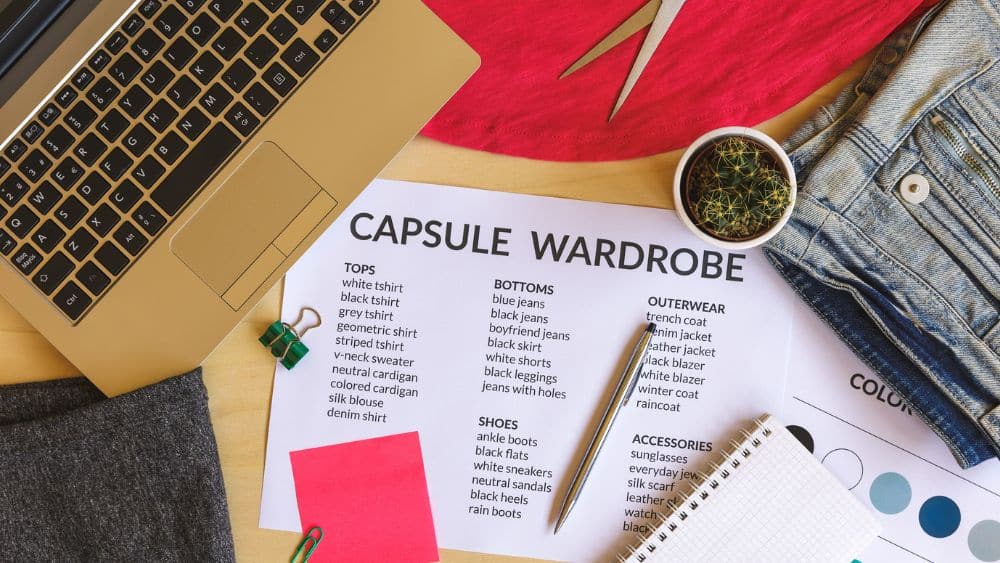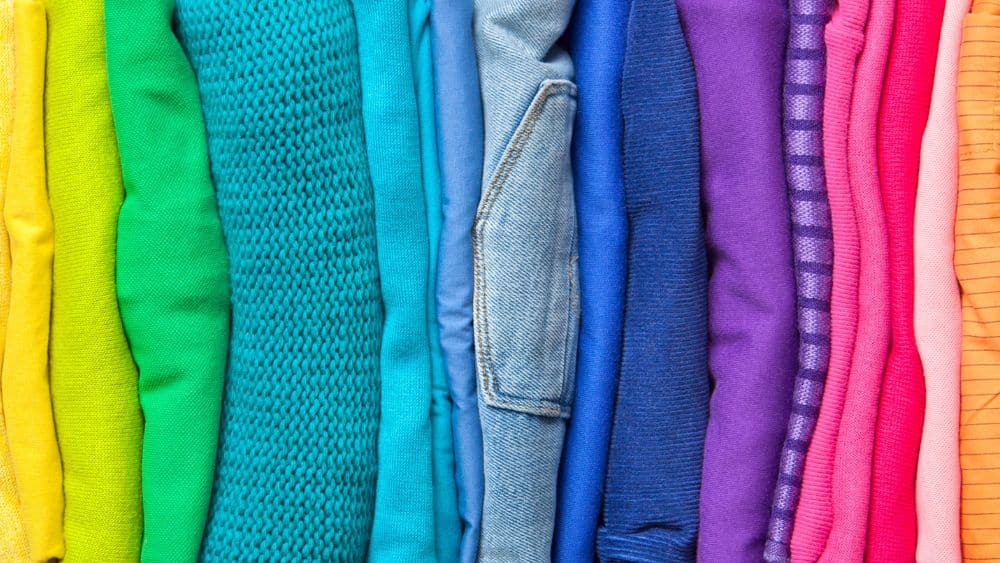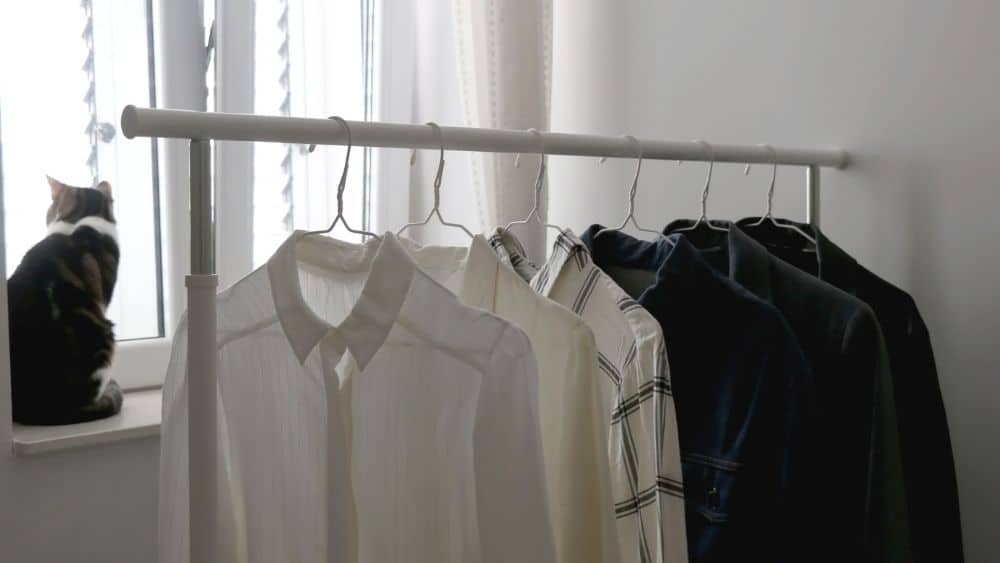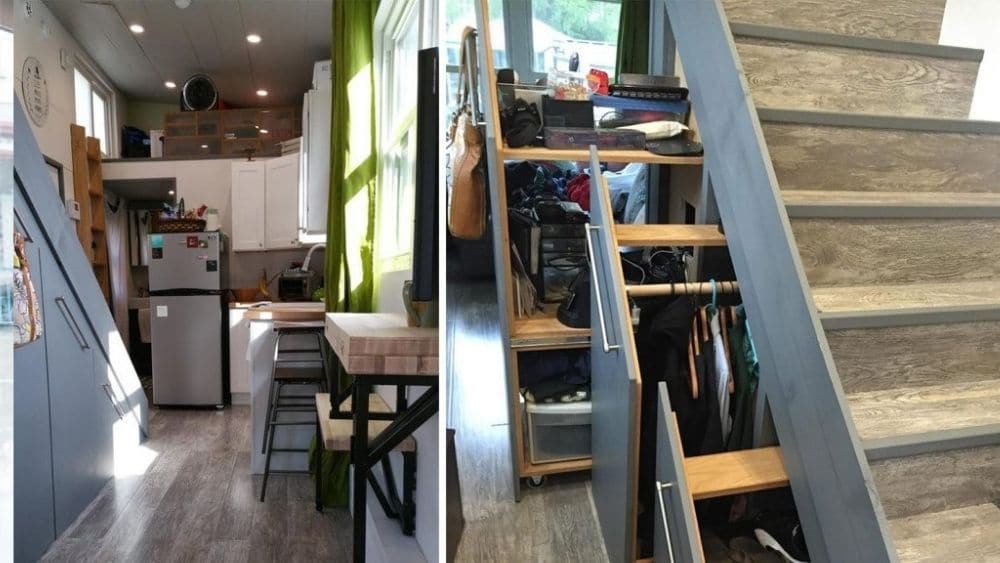Before making the switch to tiny home living, many homeowners question whether they can downsize their wardrobe to fit comfortably in the small space. As seasons change and new fashion trends arise, closets easily expand beyond control if left unchecked. Over time, this creates a surplus of items that are worn only once or twice.
While downsizing for the big move is helpful, it doesn’t offer a long-term strategy for maintaining a tiny home-sized clothing collection that accommodates all seasons. For a sustainable and stylish wardrobe to accompany the tiny home lifestyle, a capsule closet is a perfect fit.
What is a capsule closet?
A capsule wardrobe usually includes 25-50 pieces, including all clothing, accessories, and pairs of shoes. The actual number is usually relative to local climate, closet size, and personal style choice. The idea is to keep only a small set of quality versatile clothing pieces that you love.
Each capsule consists of basic clothing elements in neutral colors and styles compatible for layering. It’s best to start with one capsule per season, with some items used year-round. Store any off-season capsules to prevent unnecessary clutter.
By carefully curating an exclusive collection of classic and timeless pieces you love, you can cultivate a beautiful wardrobe to enhance the minimalist tiny home lifestyle.
A Timeless Concept
While the contemporary capsule wardrobe began trending in the last few years, the concept itself is not new at all. The idea of mixing and matching various classic elements for a confident and empowering wardrobe was made popular in the 1970s by London boutique owner Susie Faux.
Faux encouraged clients to find their own style by trying new combinations and deciding for themselves what worked and what didn’t. Her instinct for fashion and personalization inspired many similar variations of the method over the next several decades, ultimately developing into the modern-day capsule wardrobe.
How To Build It

Before rushing out to buy a whole new minimalist style clothing line, remember the purpose of the capsule closet is to save money and reduce clutter. The best way to achieve this goal is to build your first capsule from the clothes you already own.
The mechanics of building a capsule closet starts with emptying your full closet. Pile the clothing on your bed so that you can visualize the excess. Go through the items one by one and hold each individually. Take the time to try on items and consider how you feel while wearing them.
Decide which pieces you absolutely love and enjoy wearing. Identify your personal style elements and set aside pieces that flatter your body type and complement your skin tone. If you try something on and it makes you feel confident and empowered, keep it in your capsule. Responsibly recycle or donate items that you do not like or do not fit properly.
Versatility
It is also helpful to consider whether the item is versatile and/or good for layering, whether it is a neutral tone or a bold statement color, and whether it is a piece that you choose often or if it occupies the last bit of space in the closet.
Color Palette

Be sure to keep neutral colors such as navy, grey, black, white, and off-white variations. Choose a few statement colors and pieces to showcase your personality, whether it’s a pop of color in shoes or a patterned blouse. Make sure these statement pieces go well with your staple wardrobe elements for outfit combinations.
Classic Pieces
It’s a good idea to stay away from this season’s trendy items. They may be all the rage now but are likely to be outdated in a few months. Remember, the purpose of the capsule wardrobe is to save money and maximize space. Focus on downsizing your wardrobe to a smaller number of high-quality pieces that always remain fashionable and last. It’s not cost-effective to purchase the next trendy outfit as soon as it hits the shelves and only wear it once or twice.
Eco-Friendly Elements

If you’re going for the eco-friendly tiny living route, consider the materials in your collection. Responsibly sourced organic cotton, linen, and hemp apparel are highly popular for their sustainability. Compared to other fabrics, they are breathable and versatile for all seasons. Recycled and upcycled cotton items are also viable ways to keep used material out of landfills.
Make your own Rules
There is no rulebook for cultivating your own stylish capsule wardrobe, so choose what makes you feel good! Every person’s capsule looks different and fits their unique lifestyle. If you work 8-5 in an office with a professional dress code, your capsule may look different from one belonging to a full-time college student.
What does a capsule closet consist of?

A basic example of a capsule wardrobe might include:3-5 neutral t-shirts and tank tops, 3 business professional shirts, a sweater or two, a professional blazer, a pair of slacks and 1-2 jeans, two pairs of shorts or capris, one or two monochrome dresses or jumpers, and one or two skirts. Shoe choices may include a pair of sneakers, sandals, and/or boots, and one pair of professional heels or flats. For additional layers and accessorizing, you might include two jackets, a cardigan, one or two scarves and/or hats, two or three necklaces, two sets of earrings, and finally, one or two bracelets and handbags.
If you’re feeling lost in the process of curating your first capsule wardrobe, there are several outfit organizer apps such as Stylebook, Smart Closet, and Pureple that can help.
How to Maintain a Capsule Closet
The cardinal rule of capsule closets is, of course, no excessive buying! The best way to maintain a capsule wardrobe is to only buy new items when your current ones are damaged or no longer fit appropriately. The piece may then be responsibly recycled (or upcycled!) and replaced. Individuals should routinely assess their capsule wardrobe to ensure their items are still in-style, fitting well, and worn frequently.
Five-Star Benefits

Maximize Space
The perfect tiny home usually comes with an oh-so-cute tiny closet! Cramming a colossal collection of clothes into a tight space does not serve anyone. A capsule closet is perfect for keeping the space open, airy, and free of clutter. Keeping the closet tidy and breathable also reduces stress and supports healthy habits. By ridding your closet of fast fashion and the latest fads, you will free up space for sustainable items that will last for years.
Minimize Decision Fatigue
We make so many decisions in one day that it can be physically and mentally exhausting to add just one more: what to wear. By capping the number of dressing combinations, people are often less stressed about picking out the perfect outfit for any occasion. Also, knowing the options in your closet makes laundry schedules easier to plan.
Save Money and Time
Capsule closets not only save time in decision-making, but also money. By keeping a close eye on their wardrobe count, you can manage your spending more wisely and refrain from extravagant purchases. The impulse buys that seem irresistible in the store will be required to fit into your preset capsule criteria.
Most people who get into the habit of utilizing a capsule closet find that it affects their spending positively. They are often more critical in their clothing choices and only spend money on items that they love and enjoy wearing.
Tiny House with a Tiny Wardrobe
A capsule closet maximizes space, reduces clutter, and prevents unnecessary stress. They also promote sustainability and are a great way for anyone to set the tone for a minimalist lifestyle.
